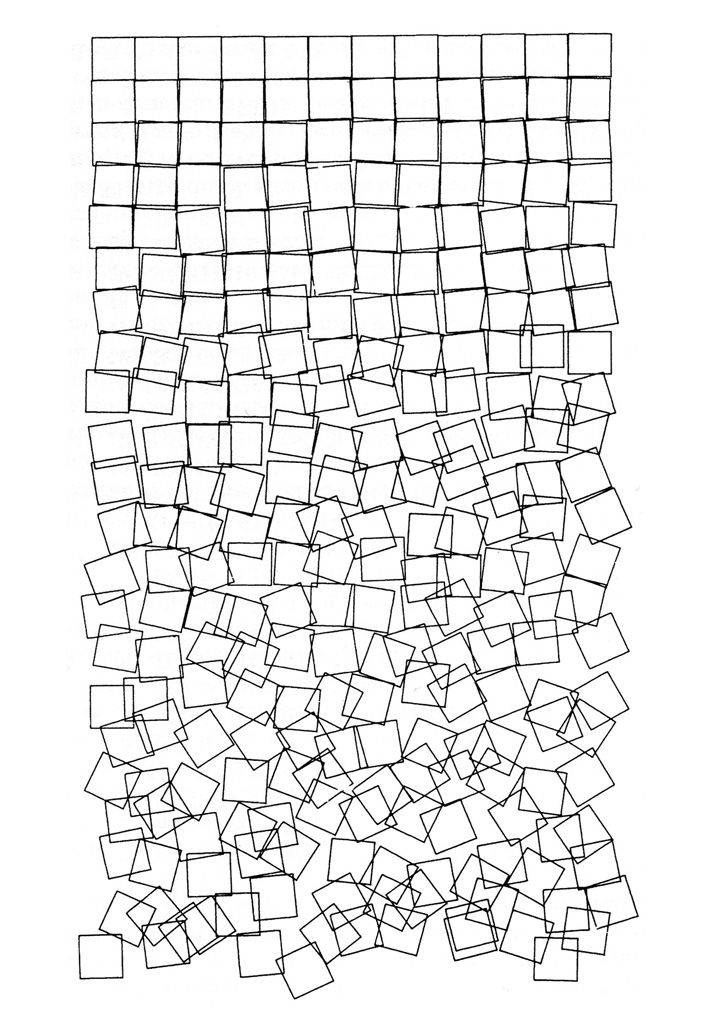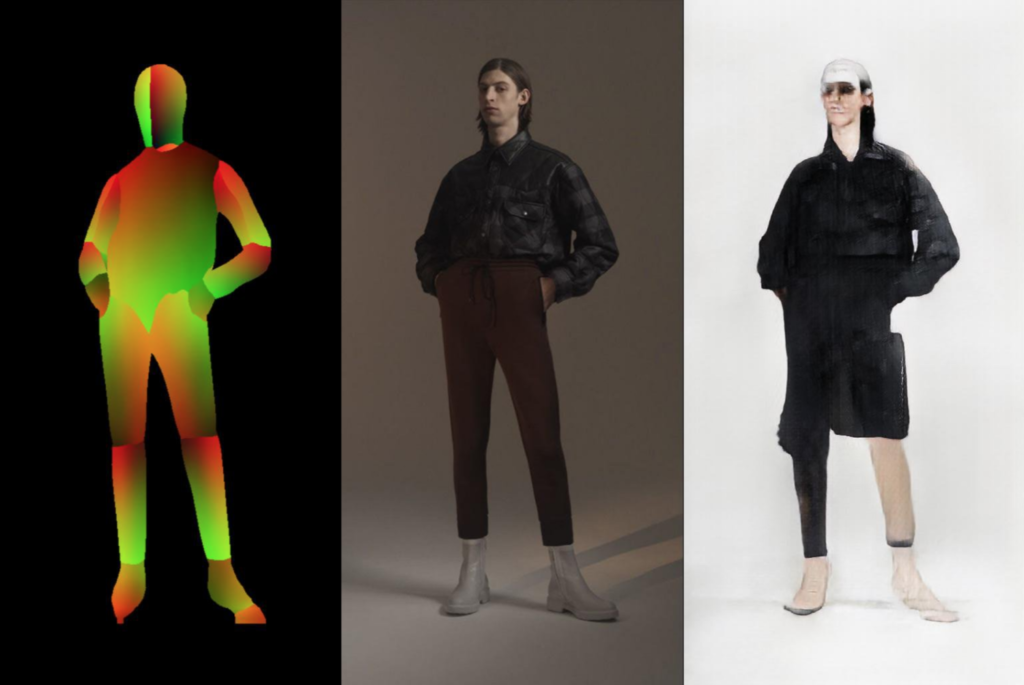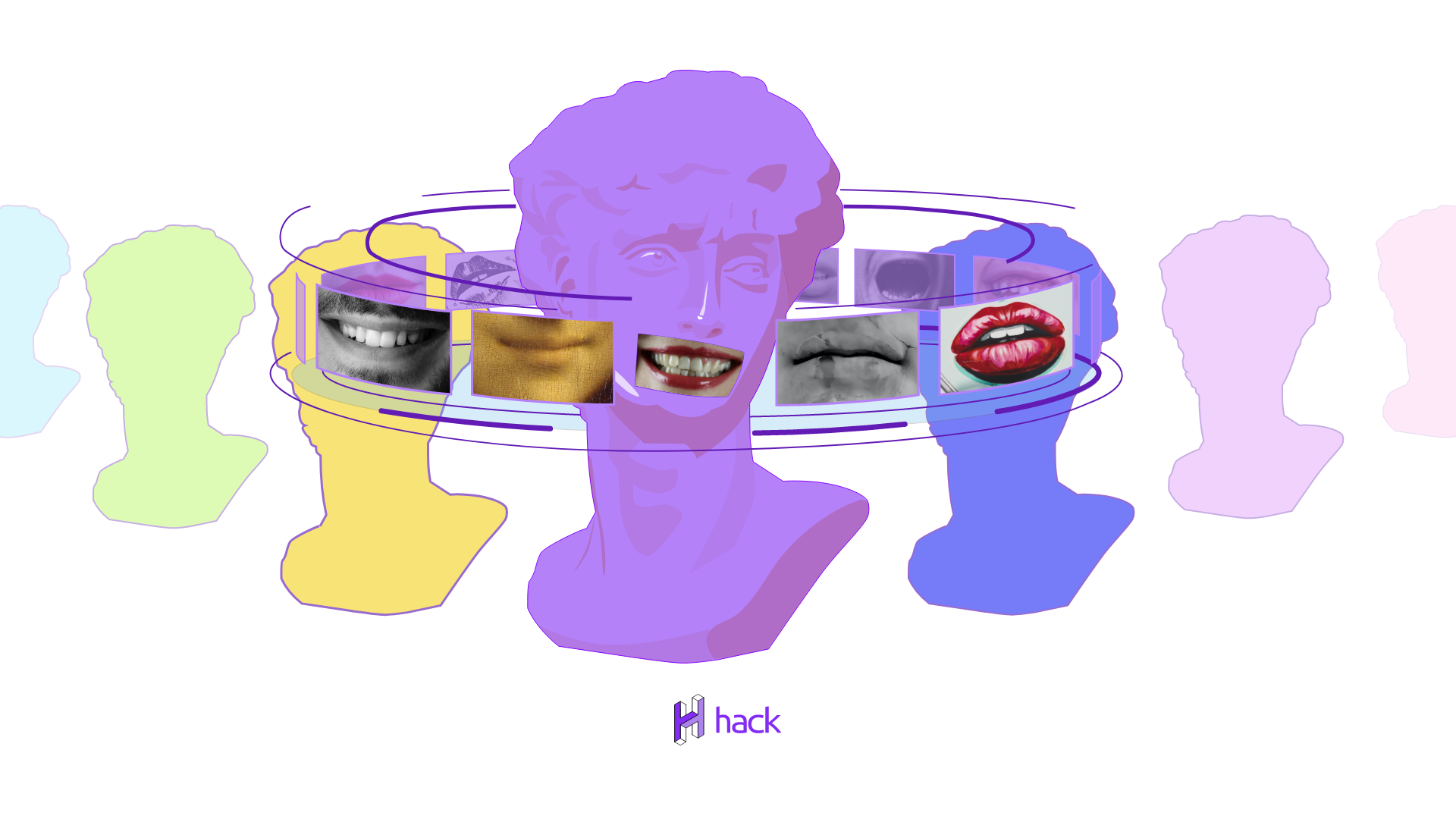The market for non-fungible token-based artworks has exploded with the $69m Beeple splash at Christie’s in March 2021. Since then we are witnessing great recognition in the new way of expressing and presenting art as well as the creation of new forms and techniques of digital art to the newest – generated one.
But does this new form of artwork born from code, change how we think of and value art? What is the main purpose of art in the first place, anyway? How can we understand these artworks within the scope of art history? What is the background of NFTs and how do we position these artworks within the broader digital art movement and is it just a boom of the absurdity of contemporary art or it might end up as a perfect blend between human creativity and artificial intelligence?
Art is a broad abstract concept.
But let’s agree on that whatever notion art has, it’s for sure not a noun. It is a verb. It is an action. Art is an expression of our thoughts, emotions, intuitions, and desires, but it is even more personal than that: it’s about sharing the way we experience the world. It is the communication of intimate concepts that cannot be faithfully portrayed by words alone. And because words alone are not enough, we continue to find new ways of expressing intent, emotion, understanding, being.
“Art washes away from the soul the dust of everyday life.” Pablo Picasso
Works of art may elicit a sense of wonder or cynicism, hope or despair, adoration or spite; the work of art may be direct or complex, subtle or explicit, intelligible or obscure; and the subjects and approaches to the creation of art are bounded only by the imagination of the artist. Consequently, I believe that defining art based upon its content is a doomed enterprise.
Take Picasso, Munch, Da Vinci, to name just three. They have made a stand against norms in their art. Otherwise, their art is like all other art: its only function is to be experienced, appraised, and understood (or not).
Through the years, art has been evolving with the evolution of the human. A hundred years ago the individual had different feelings, longings, frettings, afflictions, and art has always expressed these values. Art changes as our problems change. Today art is focusing on the more existential, political, psychological aspects of human existence. Technics of expressing are changing too and as the modern person is living digitally, modern art has to follow this pace as well.
In the spirit of controversy, one ecosystem is raising – NFT generative art. This form of modern art has been rapidly growing within the crypto world for the last year or so and has emerged as an alternative to the absurdity of the traditional art world. Using a new artistic digitally native medium, the movement fundamentally challenges our conception of what gives art its value and how society expresses its values through its many forms – music, design, fashion, performance, etc.
But before we discuss the value of generative art, lets first take a quick look at what actually this is:
What is Generative Art?
To put it simply – It is an art made with code and then traded on exchanges made with code.
Now, in more detail – A generative art is a process of algorithmically generating new ideas, forms, shapes, colors, or patterns. First, you create rules that provide boundaries for the creation process. Then a computer follows those rules to produce new works on your behalf.
In contrast to traditional artists who may spend days or even months exploring an idea, generative code artists use computers to generate thousands of on-demand digital contents that are stored immutably on the Ethereum blockchain. All this within milliseconds.
Collectors can pick a style they like, pay for the work using crypto, and a randomly generated version of the content is created by an algorithm and sent to the collector’s Ethereum address. The resulting NFT might be a static image, 3D model, or interactive experience that is unique and exclusively owned by the collector in their crypto wallet.

Implementing inputs from the collector at the moment of minting such as their wallet address, gas price, block number, block timestamp, and transaction ID, allows the collector to be part of the creation process, each piece embodying a unique and irreplicable collaboration between artist, collector, and machine. Generative art pieces are thus intentionally introducing randomness as part of the creative process, creating a slot machine-like game where neither the artist nor the collector knows what the end result will be.
But, is the real value of these art pieces really encoded in the token?
The value of generative art is based on an interplay between embedded attributes with varying degrees of programmatic rarity and how those elements come together in a way that is visually aesthetic and pleasing to the collector. Although the programmatic characteristics add quantifiable metrics that can be used to assist in the valuation of the NFT, generative art pieces still have an element of subjectivity driving demand.
In the traditional art market, the works of dead artists often fetch a hefty premium, as the scarcity of these pieces is ensured. Similarly, generative art projects often programmatically enforce a supply cap on the total amount of pieces that can be produced, which typically is circa 10,000 unique NFTs per collection. Once all of the primary issuances are claimed and the supply cap is reached, collectors must turn to the secondary market to acquire the NFTs, with the NFTs often selling for many multiples above the primary issuance price.
The tricky thing about NFT art, in general, is that its very existence turns artworks into pure currency—a flattening of creative expression that some artists tend to chafe at. Valuing art solely based on how much money people make is reductive and detracts from the personal and cultural value that art can have and the impact on our being.
“There are a lot of people who know the price of everything and the value of nothing.” Oscar Wilde’s 1892 quote
As we discussed in a previous article “Why are spending millions on NFTs” – People tend to save money – land, property, stocks, gold, and art are the most preferred approaches. In recent years faith in the US dollar seems to be at an all-time low, which led people to search for new ways of investing. People have long used art to store value and NFTs just happen to be another more fancy approach for people to invest.
What about the prices of the artworks, though?
To answer this I would use a quote from one of our guests from the first hackCast about NFTs, Art & Blockchain:
“Well, basically, the NFT art market is just like the regular art market. If someone is willing to pay for a banana taped to a wall $120 000 then that is the price. The price covering the NFTs artworks is driven by the same mechanism as the regular only a bit fancier”.
Luka Sučić
If we look at art as a source of meaning and a carrier of a message, as we thought of in the beginning, we have to think of Kristo. His ideology of art was meant to have no meaning. His first installation was in 1975 when Christo and Jeanne-Claude decided to wrap the Pont-Neuf, the oldest bridge in Paris. The art installation itself carries no specific message but incites many interpretations among the audience and every single one of them is legitimate, claiming that we as human beings sometimes need meaningless things to stimulate us spiritually.
We have to admit that everything is moving digitally. Music. Books. Art. NFTs just happen to be the blockchain solution suitable for the art industry, bringing new forms of presenting, owning, storing, and creating art.
Generative Art’s Benefits
And since generative art is considered a form of digital art or a new media art style that can also be referred to as Coding Art, Interactive Art, or Generative Design, we are obliged to cover this new form of art’s benefits as it is becoming more and more recognizable.
One of the earliest and best-known pieces of generative art is the 1968 artwork called Schotter (Gravel) by Georg Nees. Schotter starts with a standard row of 12 squares and gradually increases the magnitude of randomness in the rotation and location of the squares as you move down the rows.

Imagine for a second that you drew the image above yourself using a pen and a piece of paper and it took you one hour to produce. It would then take you ten hours if you wanted to add ten times the number of squares, right? A very cool and important characteristic of generative art is that you could have added thousands of more boxes, and it would only require a few small changes to the code.
Unlike analog art, where complexity and scale require exponentially more effort and time, computers excel at repeating processes without exhaustion. The ease with which computers can generate complex images contributes greatly to the aesthetic of generative art.
Leading to the thought that computers, something we have a general perception of as cold, unhuman logical machines, can help creators to materialize quite so faithfully an image that previously existed only in their mind and the range of autonomous systems that can be used to generate art is vast: from simple rule systems to fractal algorithms to more complex AI-powered systems like Generative Adversarial Networks (GANs).
GANs are comprised of two neural networks, which are essentially programs designed to think like a human brain. In our case we can think of these neural networks as being like two people: first, a “generator,” whom we will think of as an art forger, and second, as a “discriminator,” whom we will think of as the art critic. Now imagine that we gave the art forger a book with 1,000 paintings by da Vinci as training material that he could use to create a forgery to fool the critic. If the forger looked at only three or four of those da Vinci paintings, he may not be very good at making a forgery, and the critic would likely figure it out pretty quickly. But after looking at enough of the material and trying over and over again, he may actually start producing paintings good enough for the critics.

Using GAN, creators are training the AI to produce radical new fashions, styles, technics, unlike anything a traditionally trained human creator would ever come up with.

Although the NFT generative art market may be inundated with the euphoric sentiment, there are those who believe it is ushering in a new digital Renaissance enabling artists to reach a global audience and experiment with a new medium that is engaging collectors on a deeply emotional level.
Ultimately, the forms and types of art that are produced and highly coveted signal the fundamental values of a society. Calcifying around values of community-building, inclusion, and mimetic culture, blockchain-based NFT generative art has usurped the traditional art market in its ability to draw attention and capture the imagination of a global audience. The NFT art community has accomplished this by building an internet-native global community of avid fans, creators, and collectors that do not take themselves too seriously and prioritize fun and connection over physical material possessions.
Conclusion:
As I was writing this article, my intention was not to deep dive into the technical aspects of Generative art NFTs and convince you to come to any conclusion, but to hopefully start a debate on value or just to make you raise questions and make you think in the psychological aspect of technologies and how are they changing us. Our thoughts. Our understandings. Our visions. Our feelings. Our values.
Give us your thoughts. What determines value? How do we think of art these days? How is technology changing art? What is the future holding for art and blockchain?



